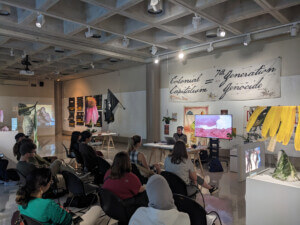It had been a busy week for Andrew Brown and Shiloah Coley. By Saturday afternoon, the Van Alen Institute programs and communications staffers were happy to host a respectful crowd for the launch of the GLOwanus art project. The atmosphere was far more subdued than it had been during the previous event at the Van Alen that week, when a contingent of 30 to 40 aggrieved residents threatened to commandeer an unusually raucous Brooklyn Community Board 6 meeting with their vocal—and frankly prejudiced—opposition to a proposed asylee shelter.
Rabble-rousers notwithstanding, “hosting those [community board] meetings is a cornerstone of how we’re thinking about ourselves as an institution,” executive director Deborah Marton told me over coffee a few days later. It’s just one aspect of the organization’s wholesale “mission shift,” which she has spearheaded since her appointment in 2019.
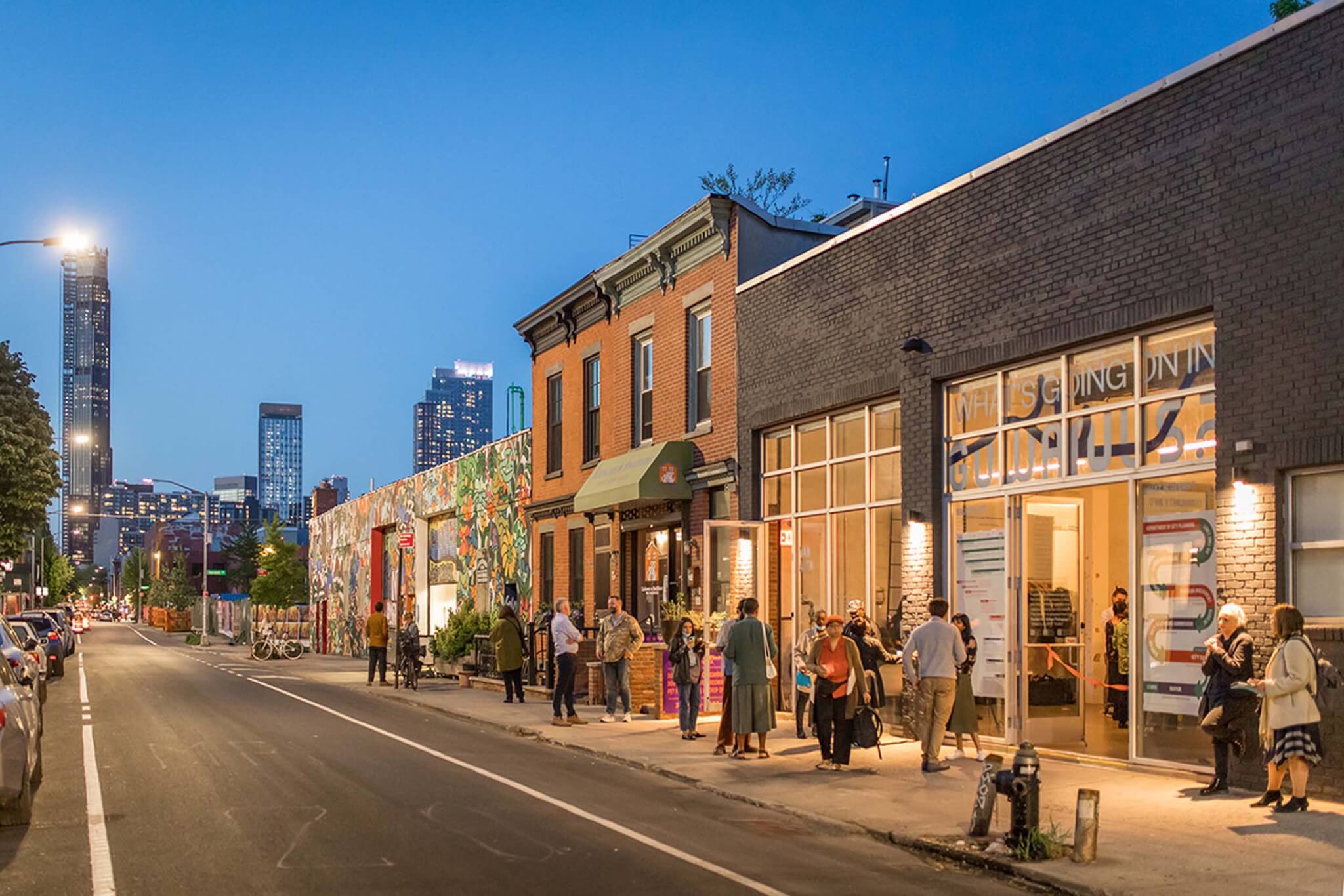
The ideological pivot and relocation to Brooklyn followed the institute’s sale of its longtime home at 30 West 22nd Street, where Van Alen had occupied a portion of the office space and the street-level storefront but leased out the rest. “The board decided that we should really focus on the mission, as opposed to focusing on being a landlord,” Marton said. The $30 million sale handily funded the ground lease of a former garage at 303 Bond Street in Gowanus, Brooklyn, but more importantly, it gave the organization ample runway for a strategic reorientation on the cusp of the institution’s 130th anniversary.
With a new home in rapidly changing Gowanus, where a controversial upzoning has followed a major Superfund cleanup effort, Marton admits she was mindful of the optics of the move: “We had no agenda other than being open and learning from the community,” she said. “And what we found was that all anyone needed was just a place to convene and some resources to support what they wanted to do—nobody needed us to tell them what to do.”
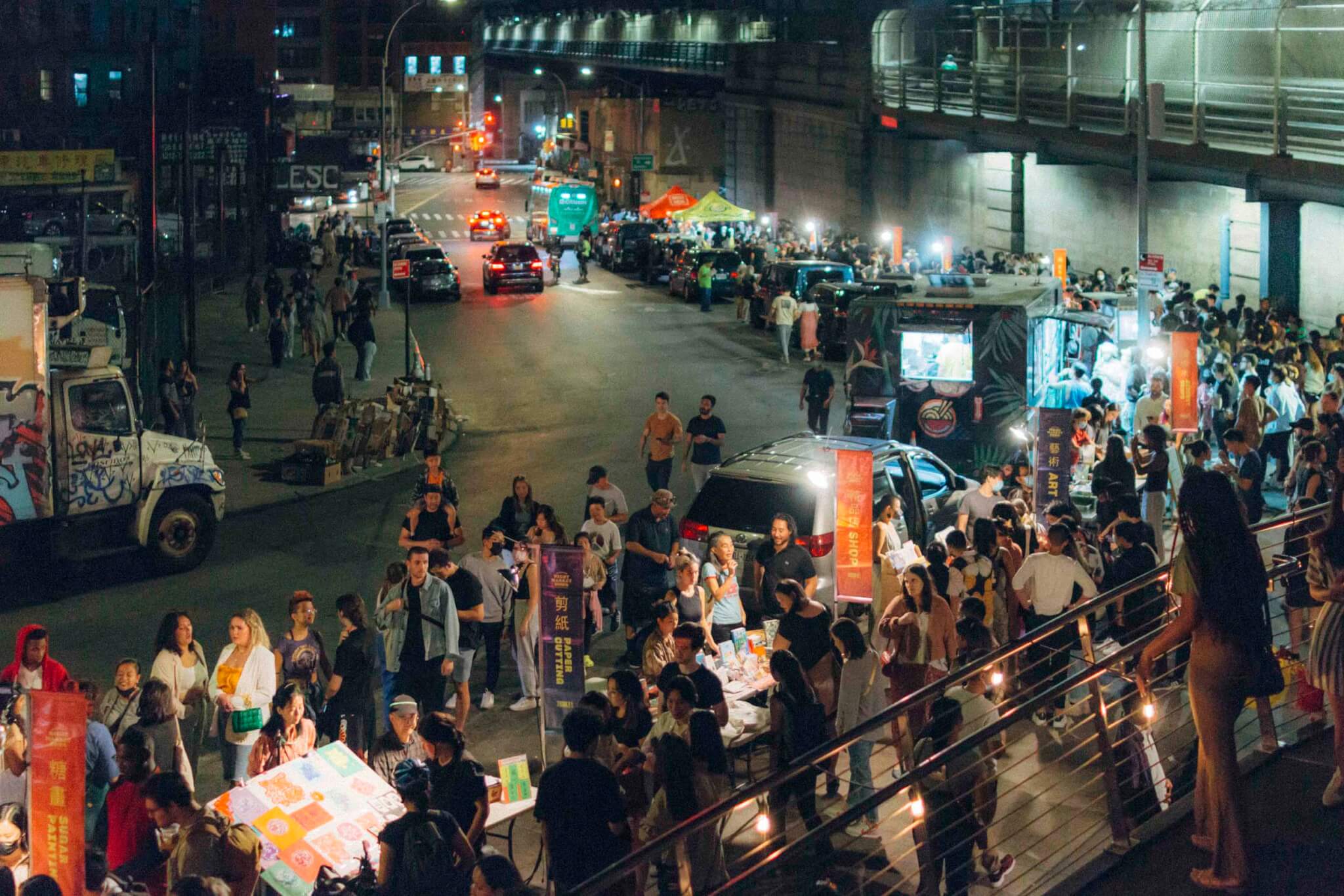
Mission Shift
While the Van Alen spent many of those first 130 years as a member’s-only club focused on professional architects, what has changed since Marton took the reins in 2020 is a renewed focus on community partnerships, casting architects in a supporting role. Marton said that “instead of teaching folks about Beaux Arts architecture or what have you, we say, ‘Let’s bring that community into the service of design justice—and just justice proper.’”
Prior to the mission shift, projects usually came over the transom from city and municipal agencies that turned to Van Alen for “community engagement”—which, according to director of programs Andrew Brown, usually meant they were “just getting the community to rubber-stamp an idea.” An instance where this approach backfired was in 2017, when the Van Alen Institute organized the Gateways of Chinatown design competition to create a public landmark on an odd, triangular parcel on Canal Street for the Department of Transportation. “Despite efforts to explicitly avoid neighborhood blowback, I think the way the competition was structured—bringing in artists that didn’t come from the community and just dropping those ideas on the neighborhood—triggered a lot of frustration and anger,” said Brown. “It’s one thing to feel like what you’re doing is wrong, but how do you figure out what the next step is?”
The financial stability of the Chelsea sale afforded a major rethinking of not only the mission but how to reimagine an organization dating back to 1894. “How do we partner with communities in a more organic way, to figure out their vision for their neighborhood?” Brown asked. “What’s their definition of success? And then how do we structure a program to make that vision come true?”
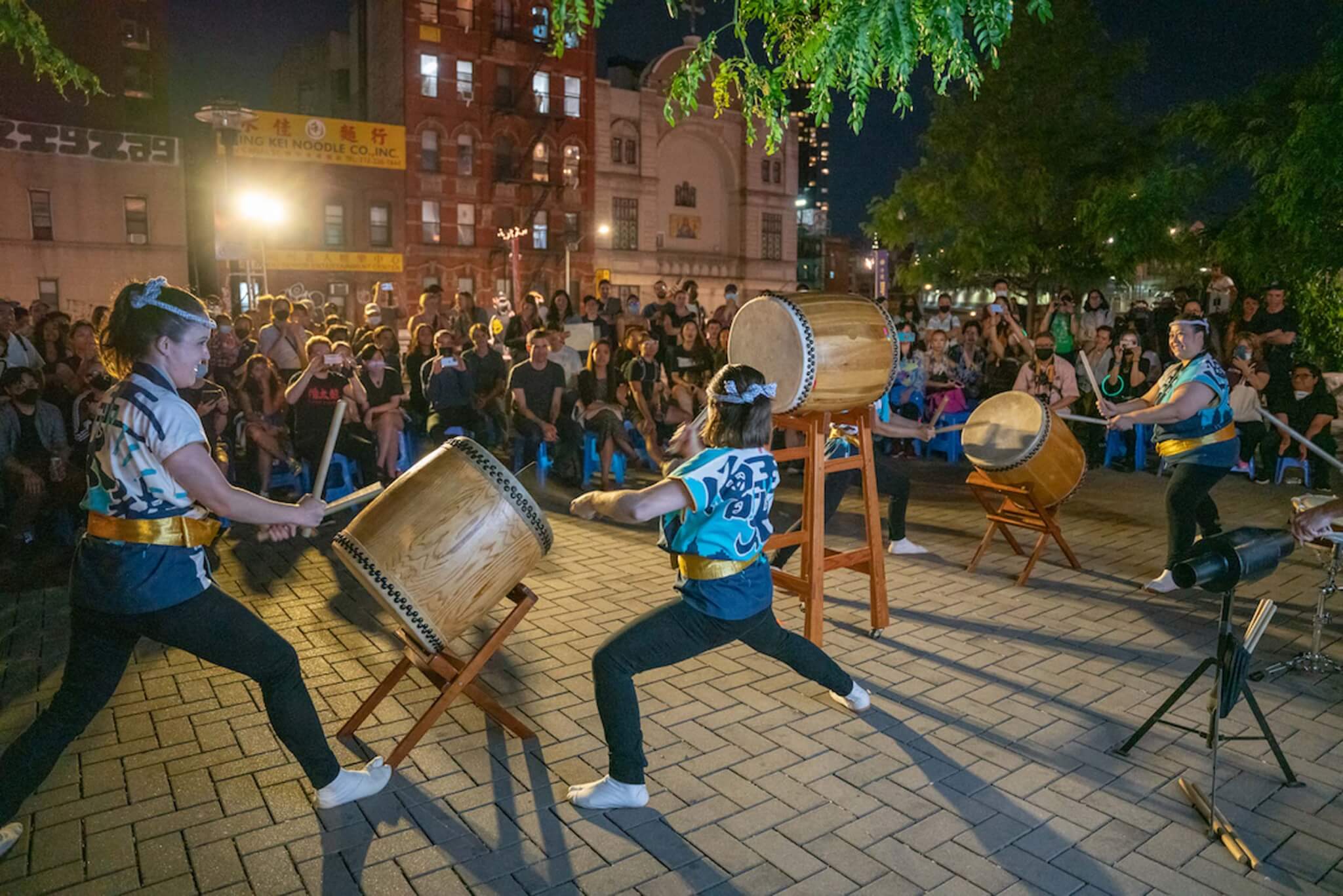
Neighborhoods Now
One answer comes in the form of the initiative Neighborhoods Now, a collaboration with the Urban Design Forum. Launched in May 2020 as a response to the pandemic, the programsocial connected community-based organizations (CBOs) in hard-hit neighborhoods such as Bedford-Stuyvesant, Kingsbridge, and Jackson Heights with designers from the likes of Jaklitsch/Gardner, COOKFOX, and SO – IL, who provided pro bono design services for outdoor dining structures, pop-up markets, and other initiatives. A key takeaway? Documentation of projects is paramount: “From every partner, we consistently heard that the most valuable outcome of anything we did was the assets of the video, storytelling, and data collection,” Marton said. “They use that for their own fundraising efforts.”
Neighborhoods Now also turned out to be an opportunity for the Van Alen to redeem itself after the Gateways of Chinatown debacle. “At the time, I was just a nerdy urbanist neighbor who felt like that design process was not in tune with what the community needed,” said Yin Kong, who is now the executive director of Think!Chinatown, one of the partner organizations for Neighborhoods Now. Years later, she was understandably “wary” about working with Van Alen when they reconnected through the Chinatown Night Market project. Yet, like Brown, she credited Marton for bringing “a completely different approach and a better understanding of how to work within communities.”
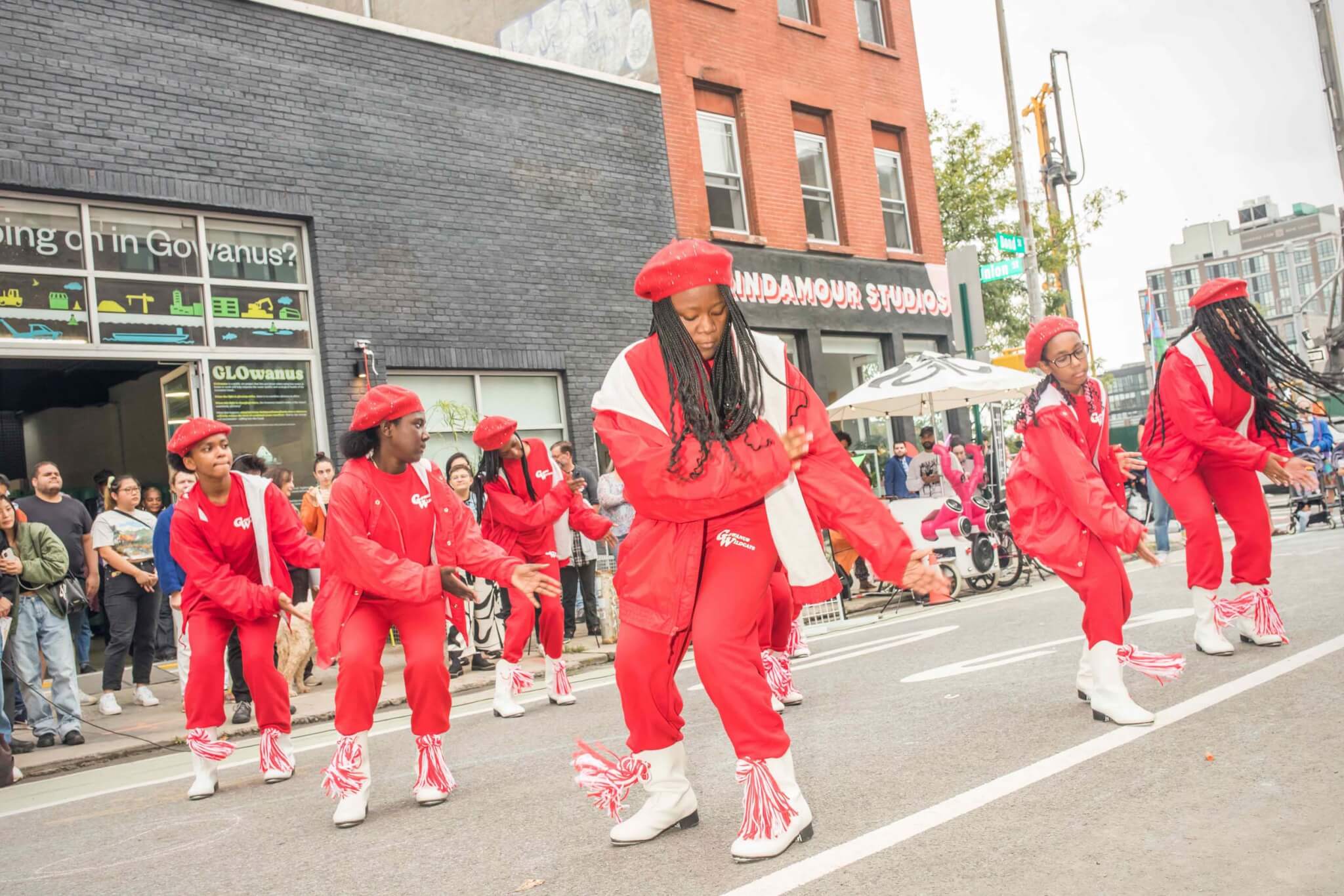
From 60 to 100
Of course, the mission shift is intended to be an iterative learning process for everyone involved. Programs associate Shiloah Coley understood why one CBO’s initial response to her outreach was “We don’t work with architects,” because architects have historically been like a tool for gentrification. Coley eventually formed a partnership with the CBO, though, furthering an ongoing project that was well-conceived but needed funding. Brown told me that “the impact is meant to be capital: [Van Alen] doesn’t take an organization from 0 to 60 but from 60 to 100.” Kong concurred: “Van Alen hit on something really valuable with Neighborhoods Now: letting the community organizations take the lead in the design programs or projects while empowering them with technical assistance from designers and, of course, bringing some funding to make it happen. It’s a really great model for groups that know what they want.”
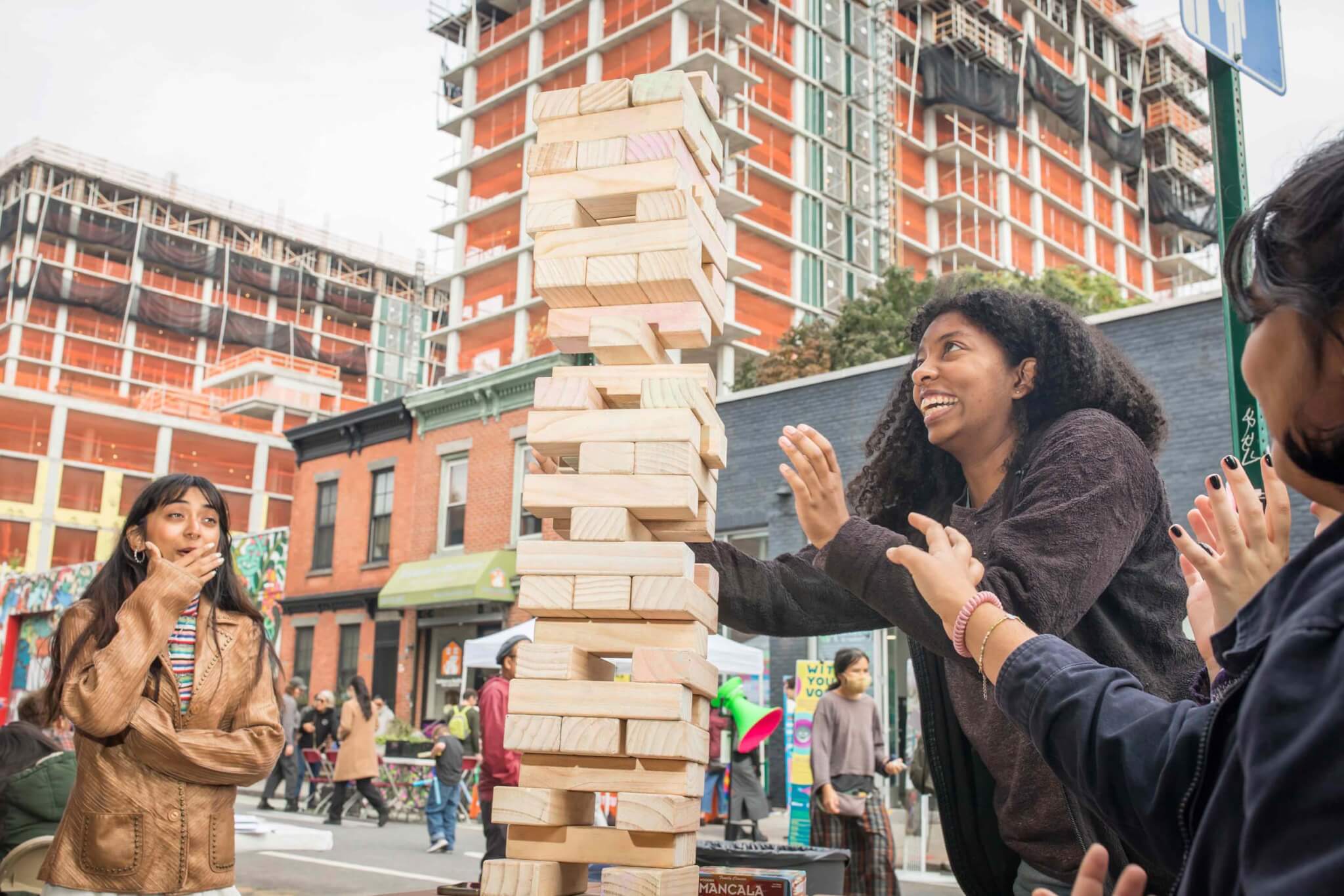
Even as its mission comes into focus, the Van Alen Institute means many things to many people. For some, it’s a place; for others, it’s a grand experiment in building trust; for others still, it’s a new model of community-based design education or technical assistance. For Gowanus residents, it’s the host of a vibrant annual block party, or perhaps it’s just another nerdy urbanist neighbor. For all of the above, though, it’s a multimodal network—and still very much a work in progress.
Ray Hu is a Brooklyn-based design writer and researcher.







